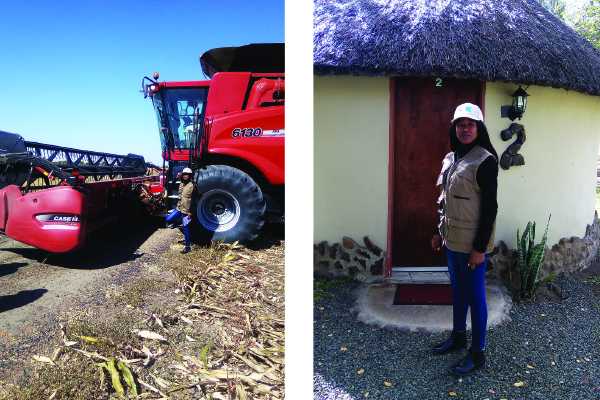Pandamatenga Farms, the farming experiment
Located in the North-West District, Botswana lies over 20 000 square kilometer land allocated to 54 commercial farmers who produce sorghum and beans to contribute to food security in the country.
A team of journalists and National Development Bank (NDB), the major financiers of the commercial farmers toured the farms last week. The bank has spent over P500 million financing farmers every year and last year P80 million was spent on Pandamatenga farmers alone. We arrived at 8pm in Panda Rest Camp; the place is amazingly beautiful with 16 Tswana traditional huts and an outdoor conference facility, (Leobo in Setswana), well placed to suit the lifestyle of people in the area. Early morning we started the tour of the farms.
Our first encounter was with the oldest farmer in the area, Mr Ian Cumming, who arrived in Pandamatenga in 1984. He started with bailing grass for the government and after two years he applied for a plot, which he was allocated in 1986. In 1989 he produced 5000 tonnes of sorghum. Currently, he has a 500 hectares plot in which he ploughs sorghum and 505 hectares in which he ploughs beans which are currently exports to China.
Through the assistance of NDB, commercial farmers in Pandamatenga have been able to grow from year to year; producing food to feed the nation, 80 percent of sorghum and beans sold at the Botswana Agricultural Marketing Board (BAMB) is produced in the area. However, most farmers complain about the insufficient rainfalls, which have hugely affected their produce this year. Cumming said farming is an exciting yet a highly challenging business, “Farming is my passion and I have been doing it for more than 30 years in Botswana.
I have had a lot of challenges especially with these weather conditions of Botswana but I am so dedicated and committed. I am so passionate about food production. We are able to produce sorghum and beans and supply to BAMB,” he said.
We met another farmer, Hermann Venter, a South African who is also Chairman of Pandamatenga Farmers Association. He was allocated 1000 hectares a farm in 2011.
“I have spent all my life as a farmer in South Africa, it is our family business. My father, my brother and I are farmers. I came to Botswana in 2009 searching for a new environment and I started ploughing here three years ago,” said Venter.
Talking to Botswana Guardian, Venter said it is always a wise decision for the farmers to prepare the field well immediately after harvest without waiting for the next ploughing season.
“After harvest, I remove the crop remains, clear the field and rip the soil to preserve the moisture. Ripping is very important because we never know when the next rainfall will come, but when you have ripped, preserved moisture will reduce the effect of heat on seedlings,” said Venter.
The third farm, Eastfort Holdings made the journalist’s work more interesting and lovely. We found the young gentlemen by the name Adrian in the field, driving the combined harvester machine. With my curiosity, I decided to experience his work and rode the machine with him. It was a 1000-hectare field of sorghum.
The machine makes harvesting easier, less time consuming and not labour intensive as it cuts the grain heads and automatically removes grains from the heads. Adrian told Botswana Guardian that it takes less than two weeks to complete harvesting sorghum from this 1000-hectare field. In 30 minutes it produces 7 tonnes of sorghum. The activity was awesome and one would enjoy doing except for one aspect, the sorghum dust, which was really itchy.






